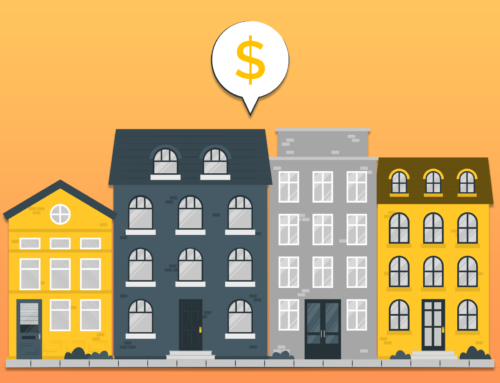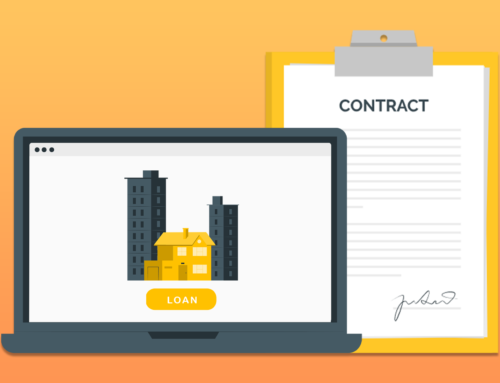What is a stepped payment note?
It is a note in which the regular payment (usually monthly) increases annually by a fixed percentage or dollar amount. The rate of interest on the note remains the same. The result is a shorter amortization period. Let’s see how it applies in a specific situation and what advantages might accrue.
Bob Buyer purchases a home from Sam Seller for $200,000. Bob pays $20,000 cash down and takes out a new loan at Insecurity Bank for $160,000 and asks Sam to carry the 2nd mortgage for $20,000 payable $161/mo. including 9% interest, all due and payable in five years. (These are the typical terms for many 2nds)
The terms of Bob’s first mortgage at the bank are a 30-year term at a fixed rate of 7% which means Bob’s payment will be $1,065/mo.
When the balloon payment comes due on the 2nd in 60 months the balance due will be $19,170. Experience has shown it is very unlikely that Bob has saved money to meet the balloon obligation on his 2nd mortgage to Sam. Unless Sam will extend his note Bob is forced to refinance and will need a new loan of about $170,000 to cover the payoffs on his first and second loans, plus prepayment penalties on the first mortgage and finance charges on the new loan.
What if current interest rates on first mortgages are 8% at the time of the refinance? His new mortgage payment will be $1,247.40/mo, for the next 30 years.
If Bob had been able to get Sam to carry the original 2nd for $20,000 with starting payments of $161/mo including 9% interest and stepped payment increases of 12% per year ( a forced savings plan) the 2nd mortgage would fully amortize in 118 months (a little less than 10 years). Bob would have $20,000 more equity in his house and only 25 years left on his first mortgage at an attractive 7% interest rate.
Sam would have all of his money back plus interest on the mortgage he carried and thereby avoided the uncertainty of a balloon payment.
In Chapter 5 of Owner Will Carry, How To Take Back a Note or Mortgage Without Being Taken we pointed out the pros and cons of balloon payments and showed how to handle them. The CD Rom described above is included with the book.
Why aren’t stepped payments used more often?
Most real estate agents are not familiar with seller financing in any form. They have been taught to list the property, look for a buyer with a cash down payment, then send the buyer to Insecurity Bank to apply for a new loan for the balance of the purchase price. Unfortunately, this simple formula doesn’t always work. Sometimes the buyer fails to qualify; sometimes the property fails to qualify. Property owners who will carry the financing find that more buyers are takers. Their property sells faster than if they waited for that elusive “all cash” buyer. Some buyers with reasonable credit still don’t qualify, or, they just don’t want to put up with Insecurity Bank’s “picky policies.”
The biggest obstacle to stepped payments may be that it has been difficult to produce an amortization schedule. T-Value, a computer software program used frequently by accountants, can produce such a schedule. The program is a bit expensive and the procedure for setting up the stepped payment calculation is cumbersome. Recently a simple (PC) program was produced that calculates stepped payments either by a flat dollar increase (periodically) in the regular payment or by a percentage increase (periodically) in the regular payment. It also computes any future balloon payment and produces an amortization schedule. It includes a column of boxes called “Date Paid” which the note holder can use to record the payments as they are received. This payment history is valuable in the event the note holder ever decides to sell the note.
In the event, the note holder decides to sell his note this program will produce a schedule that discounts the note to the investors’ desired yield. It will then amortize the discount over the life of the note and print a schedule that assists the note investor in reporting taxable income from his note investment.
Now that these mechanical problems have been solved more agents should learn how to properly structure seller carried notes and use stepped payments where applicable.
Attention: Real Estate Sellers/Buyers, Agents Note Brokers/Finders & Investors
Owner Will Carry will help anyone structure a note that is safer if held for income and will be worth more if it is ever sold for cash. These principles apply to notes secured by all types of real estate, businesses, and Mobile Homes. It includes Alternative down payment strategies, multiple carryback notes, and how to improve the security of a note. The stepped payment alternative to balloon payments. is a CD-Rom that will amortize a stepped note and calculate either the yield or discount when buying or selling a stepped payment note. Note discounting explanations. When to use performance notes and or mortgages. Why selling all or a portion of a note you are receiving payments on may be better than trying to borrow on the note, and MUCH, MUCH MORE.
This article was modified from an article originally written by Bill Broadbent and posted to this site on 2005/11/15.






